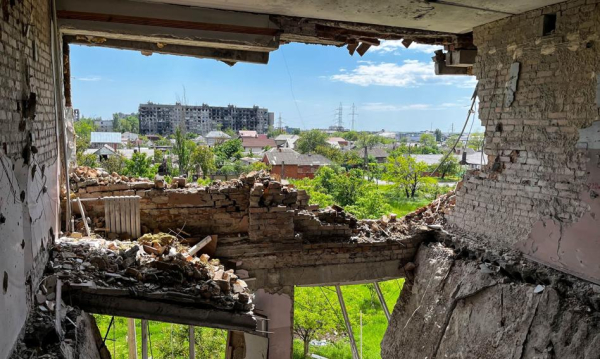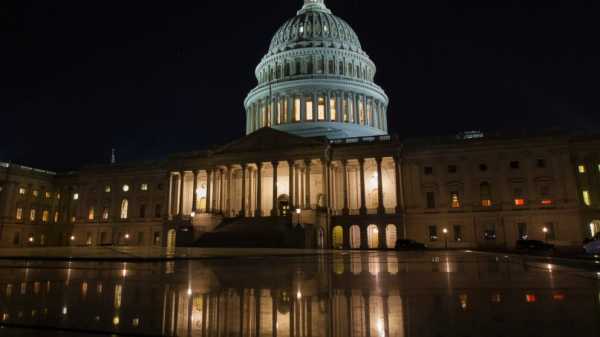The US and Russia are working on an agreement that would halt the war in Ukraine and result in Russia losing the entire Donbas and Crimea, Bloomberg reported on Friday, citing sources.

US and Russian officials are working on an agreement regarding the territories ahead of a scheduled meeting between the leaders of both countries, Donald Trump and Vladimir Putin, which could take place as early as next week.
The United States is trying to gain support for the proposal from Ukraine and its European allies, but this is not certain, sources told Bloomberg.
Putin demands that Ukraine return the entire eastern Donbas region to Russia, as well as Crimea, which Russia annexed in 2014. This would require Ukrainian President Volodymyr Zelensky to order the withdrawal of troops from the parts of the Luhansk and Donetsk regions still held by Kyiv. This would be a victory for Russia that its army has been unable to achieve militarily since the beginning of the invasion in February 2022, the agency emphasized.
This would be a huge win for Putin, who has long sought direct negotiations with the US on the terms of ending the war, with Ukraine and its European allies sidelined, the article reads.

There's a risk that Zelensky will be presented with a deal that would require him to accept the loss of Ukrainian territory. Europe fears it will be forced to monitor the ceasefire while Putin rebuilds his forces.
Under the agreement, Russia would halt its offensive in Ukraine's Kherson and Zaporizhzhia regions along the current front lines, the sources said. They cautioned that the terms of the agreement could change.
It is unclear whether the Russians are willing to give up any of the territory they currently occupy, including the Zaporizhzhia Nuclear Power Plant.
As Bloomberg noted, the aim of the agreement is essentially to freeze the war and pave the way for a ceasefire and the start of technical talks on a final peace settlement.
The United States had previously pressured Russia to first agree to an unconditional ceasefire, which would create space for negotiations to end the war.
According to the constitution, the Ukrainian authorities cannot cede the country's territory. President Zelensky has repeatedly stated that he will not recognize the Russian occupation or annexation of Ukrainian lands.
Bloomberg's sources stressed that it is still unclear whether Putin will agree to participate in a trilateral meeting with Trump and Zelensky next week, even if he reaches an agreement with the US president.
ISW: Russia's planned occupation of four Ukrainian oblasts is not inevitable
Vladimir Putin likely conveyed to Washington that his territorial ambitions for conquest in Ukraine include the Kherson, Donetsk, Zaporizhzhia, and Luhansk oblasts. However, their capture by the Russians is neither imminent nor inevitable, according to the Institute for the Study of War (ISW).
During a recent meeting in Moscow with White House special envoy Steve Witkoff, Putin reportedly claimed that his plans were limited to these four regions. The Russian leader will likely also attempt to portray such gains as inevitable in order to force Ukraine and the West into concessions. Kremlin sources recently suggested that Putin has no intention of backing down from his plan to completely occupy these areas, according to the latest ISW update.
However, Russian forces would face very serious operational challenges if they attempted to do so, and it would likely be a multi-year endeavor, so the occupation of these four regions “is neither imminent nor inevitable,” the Institute emphasizes.
According to the ISW, to control the Donetsk Oblast, Russia would still need to occupy approximately 6,500 square kilometers, or roughly 25 percent of the region. While Russian military advances toward encircling Pokrovsk have accelerated in recent weeks, it has taken the Russians 18 months to capture an area of approximately 30 square kilometers.
Russian forces in the direction of Chasiv Yar and the probably already captured Toretsk currently pose a growing threat to the belt of Ukrainian fortresses in the Donetsk Oblast and Konstantynovka, located about 30 km from Sloviansk – the northern end of the fortification belt encompassing Konstantynovka, Druzhkivka, Kramatorsk and Sloviansk.
Before the war, the combined population of these cities was approximately 373,000, and Russian forces have not demonstrated the ability to occupy cities of this size since mid-2022, so ISW estimates that an attempt by the Russians to capture the fortress belt would be a very difficult, multi-year operation.
It appears that Russian forces are now attempting to advance north along the Kamenskoye-Stepnogorsk line towards Zaporizhzhia, but are located about 20 km from the southern edge of that city.
However, Zaporizhzhia, like the cities of the fortress belt in the Donetsk region, is heavily fortified and the Russian command would have to allocate a very significant contingent to fight for it.
Moreover, Russian forces are currently conducting offensives in northern Sumy Oblast and in the north and east of Kharkiv Oblast. The ISW notes that the fact that elite airborne troops and marines are operating in Sumy Oblast indicates that the Russian command considers capturing these territories a priority, which belies the Kremlin's claims that it is only interested in the Kherson, Donetsk, Zaporizhzhia, and Luhansk Oblasts.
ISW emphasizes that Putin's military aims are not limited to these territories. The Russian leader intends to conquer all of Ukraine, but he assumes this doesn't have to be achieved solely on the battlefield, which, at the current rate of advancement of Russian forces, would take decades. However, Putin is convinced that the West will abandon Ukraine, and time is on his side.
Washington and Moscow have announced a planned meeting between Putin and US President Donald Trump, but its details remain unknown.
Meanwhile, Putin is now balancing efforts to convince the US that he is interested in peace negotiations with a domestic campaign designed to prepare Russian public opinion for the failure of those talks and a continuation of the war. The Kremlin also intends to blame Ukraine for the negotiations' failure, writes ISW.
For now, it's likely that the Russian leader used the meeting with Witkoff to propose a moratorium on long-range attacks to rebuild its drone and missile reserves. At the same time, the Kremlin's efforts are aimed at convincing Russians that no ceasefire is acceptable and that Putin's war goals in Ukraine must be achieved regardless of the war's duration. Further investment in drone and missile production is intended to prepare for long-term combat and a possible conflict with NATO, the Institute concludes. (PAP)
fit/ mms/
From Washington, Natalia Dziurdzińska (PAP)
Sun/ ap/






